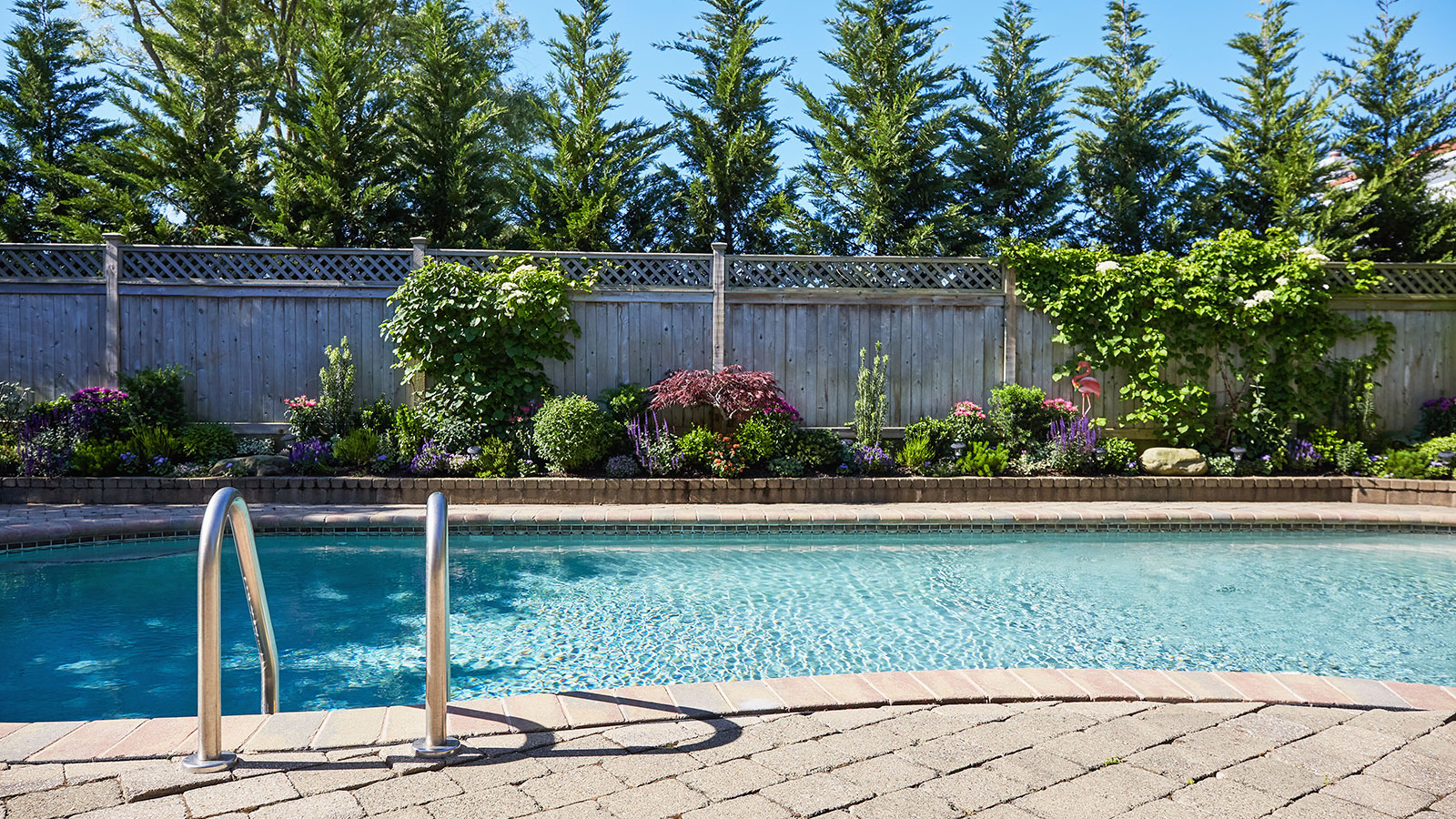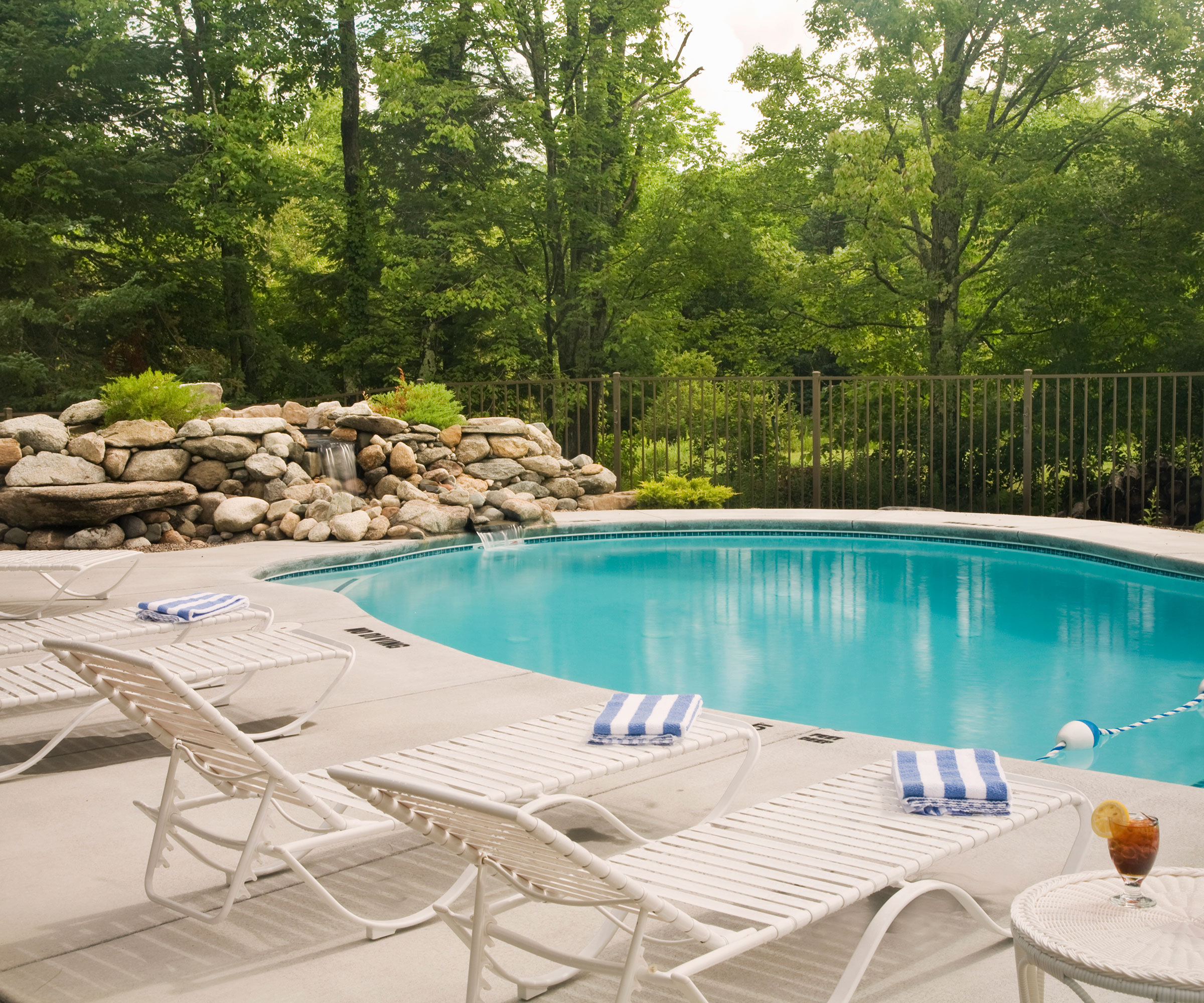
There are essential tasks that come with being a pool owner – and one of them is shocking it. Shocking – in other words, adding the chemicals that are in pool shock – is part of the routine that keeps water clean, clear and safe for all its users so everyone can enjoy swimming, relaxing or playing happily.
But to freely enjoy your backyard pool, it’s important to be sure of how often to shock a pool as well as how to do it. A regular schedule is crucial, and we’ll share the details on that here, but also essential is knowing on what other occasions shocking a pool is a must.
Knowing how to shock a pool correctly is a must, and is easy to do in just a few steps. But how often do you need to do it? Our guide has expert advice on how frequently to shock a pool so you can keep up with the maintenance.

Get the lowdown on how often you need to shock a pool
While it sounds dramatic, shocking a pool is a regular chore all pool owners have to carry out. ‘The general rule of thumb for how often to shock a pool is once every week to two weeks, depending on the pool’s usage, weather, and water condition,’ explains Hubert Miles, certified pool and spa inspector through NACHI.
These are the guidelines you need to bear in mind when creating your pool shocking calendar.
Shock a pool every week
The general rule for how often to shock a pool is that it should be done around once a week. ‘Regular shocking helps maintain proper water chemistry and prevents the buildup of contaminants,’ says Hubert Miles. ‘You should check your pool water pH levels daily to maintain a 7.1 to 7.6 level. Heavy rainfall or adding water when the water level is low can lower your pH levels. When the pH level is around 8, more than half of the shock you apply becomes ineffective and goes to waste. However, when the pH level is at 7.2 or lower, more than 90 per cent of the shock becomes active, eliminating algae and bacteria in the pool.’
Why does shocking have to be so frequent? ‘Shocking a pool often is necessary to eliminate organic and inorganic contaminants that may accumulate in the water,’ explains Hubert. ‘These contaminants include bacteria, algae, body oils, sunscreen, and other organic matter from your surrounding pool landscaping that can compromise water quality and pose health risks to swimmers. Routine shocking ensures the effectiveness of sanitizers, such as chlorine, and helps maintain a clean and safe swimming environment.’
There is a caveat to the general rule on shocking frequency. If your pool gets heavy use, you might need to shock it more often. Note that frequency is important even if the water looks clean and clear rather than prompting you by its appearance to fix a cloudy pool.
Don’t use your senses as a guide to pool shocking. You can’t see bacteria and some of the other things that can contaminate pool water, so the evidence of your own eyes should definitely not determine how often to shock a pool. It is true that you might smell the distinct odor that betrays the presence of chloramines and you might see green algae in a pool, of course, but testing the water is essential.
Tested and free chlorine levels are sufficiently high? It is worth using chlorine-free shock. ‘Chlorine-free shock is an effective alternative to traditional shock treatments containing chlorine,’ says Hubert. ‘Even when chlorine levels are sufficient, chlorine-free shock provides an additional boost to oxidize organic contaminants, enhance water clarity, and reduce chlorine odor. It is a beneficial practice that complements the regular use of chlorine, maintaining balanced water chemistry and minimizing the risk of chlorine-resistant organisms.’

Shock a pool at the start and end of the season
Where to begin your pool shocking calendar? The start of the swimming season should mark the first pool shock treatment.
‘Shocking the pool at the beginning of the new swimming season, especially after winterization, helps eliminate residual chemicals and any other contaminants that might have accumulated during the off-season,’ says Hubert Miles.
‘Secondly, it jumpstarts achieving optimal water balance and prepares the pool for regular use by ensuring a clean, inviting environment for swimmers. One final shock at the end of the swimming season should complete the schedule for the year.’
Shock a pool after a party
There are some extra occasions on which it is important to shock a pool, so these should be added to your regular weekly or semi-weekly shocking routine. One of these occasions is after a pool party, when the water has seen a lot of use.
The more people in the water, the more opportunity for it to become contaminated by cosmetics, sunscreen and soap, but also by the skin cells and hair people shed, sweat and so on.
Shock a pool after an accident
It isn’t pleasant to contemplate but accidents happen. If there’s an incident which means urine, feces, or vomit have got into the pool, then shocking is vital in addition to the regular shocking events you have in your calendar.
Shock a pool after severe weather
If there has been heavy rainfall that create run-off water from the pool area or pool deck or strong winds that have introduced all sorts of debris to the water, then another occasion of pool shocking should be added to your rota.
FAQs
How often do you shock a chlorine pool?
A chlorine pool should be shocked around once a week, or possibly more often depending on what use levels it sees. If after testing you find free chlorine levels are sufficient, you can use a non-chlorine pool shock, which still oxidizes the pool even though it doesn’t contain chlorine. It will reduce chloramines and it maximizes the performance of the chlorine in the pool for optimum sanitization of the water.
Can you shock a pool too much?
It is possible to shock a pool too much in the sense that the free chlorine level is too high for swimming. This could be irritating for any swimmer’s eyes, hair and skin. Check the level before swimming: it should be at least 1 part per million (ppm) but ideally in a range between 2 and 4 ppm. You should never use the pool if the chlorine level has gone above 5 ppm. Wait, being sure not to add any more chlorine until levels fall, which you’ll need to check by testing. You should also check pH levels.
It will probably take a few days for the chlorine level to fall. To speed things up, you might want keep the pool uncovered so UV lowers chlorine levels.
Looking after your pool correctly is essential to ensure it's a safe and hygienic environment for everyone to swim in. Just as you need to shock a hot tub on a regular basis to maintain the correct levels of chemicals in the water, the rules are no different for a pool.







